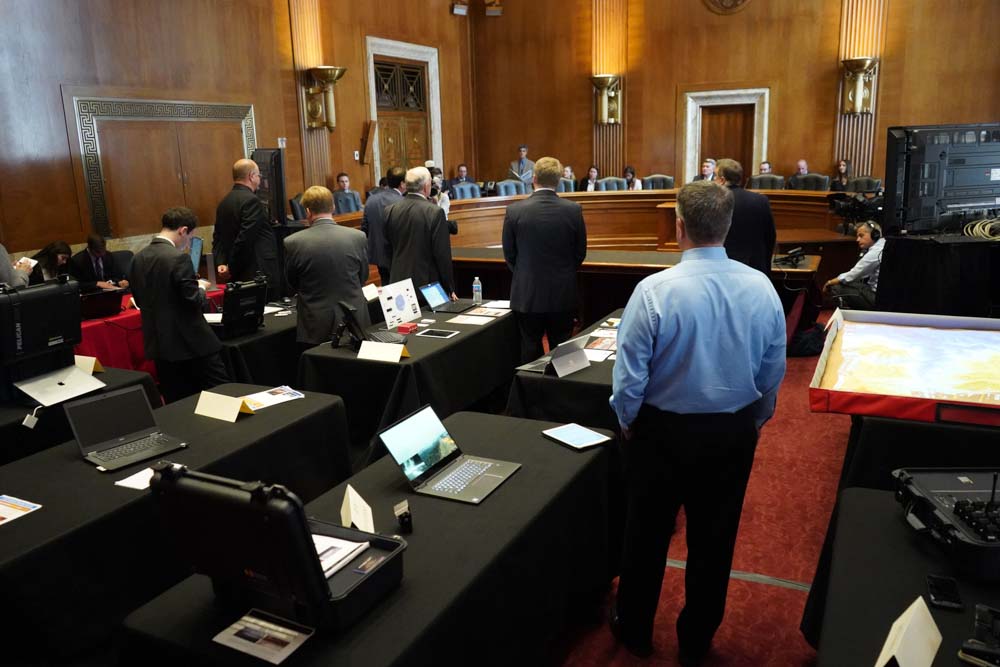
This week the Senate Energy and Natural Resources Committee held a hearing in Washington about new technologies that can aid wildland firefighters. The Committee invited companies to describe new systems that can help firefighters communicate and improve their situational awareness. Legislation signed by the President in March requires the federal land management agencies to adopt within 6 to 24 months systems that can track in real time both the advancing edge of a wildfire and all of the firefighting resources working on the incident. Firefighters have been killed when these important facts about a dangerous fire were not known, due to smoke, darkness, or terrain.
In the video below we see interviews with the representatives of six companies describing their systems that may improve the situational awareness of firefighters.
(The video can also be viewed at YouTube)
Only three of the 20 Senators that are members of the committee attended the hearing, Cory Gardner (CO), Maria Cantwell (WA), and Martin Heinrich (NM). Approximately 20 Senators sent one or more members of their staff to observe.
In addition to the six companies that appear in the video, other organizations that had exhibits and made presentations in the hearing were the National Weather Service, Rave Mobile Safety, Vulcan Fire, and Simtable.

Nice compilation, Bill, of some interesting and needed tech. Thanks for making the trip and effort to keep interested parties informed. Interestingly I was talking to our forest radio tech on the LO yesterday about this very subject. His task is to have our huge dispatch zone up to speed with current and soon to be obsolete radio hardware at all times. And that gear has to always be ready when the situation goes south. Tough task for one employee that has repeaters on USFS, BLM, NPS and BIA lands.
Lo Rick, thank you for your comment. The general public most generally thinks when the words “forest fire” or “wildland firefighters” are used there frame of mind only goes to the firefighters on line not the “behind scene” or those in the supporting shadows which often take just amount the same number of supporting personnel. May i ask you if your so inclined to do so, what area (besides the obvious firefighter positions) is their a tremendous need for? I am not only asking these questions for myself but for anyone else that might be interested in obtaining a career in WFF, I’m a 45 year old that want to switch careers. I’ve had some experience on fire crew (hand line) but did not get right into it straight out of highschool, i am lacking years of experience as would future kids/ young adults looking to do the same. I am though still young enough to offer years of work in the future just not on the front lines as WFF but I can and am willing to work a behing the scenes or supporting position. Any info on this matter would greatly be appreciated for myself as well as future up and comers interested. Feel free to email me regarding this subject.
Is there another place you can view the video? The link did not work… maybe because I’m on my phone?
Added a link at the bottom of the article that takes you to YouTube.